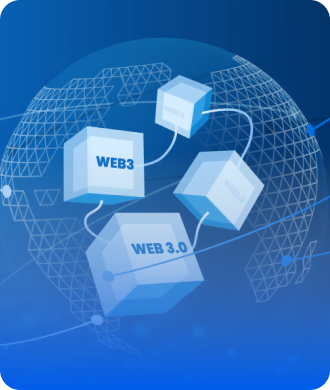
Have you ever thought of a world of Finance where investments and profits become the medium for Social Justice, Economic Empowerment, and Environmental Support?
In the realm of Web 3.0 and Blockchain, you might have come across the revolutionary term DeFi known as (Decentralized Finance), but now it has revolutionized into a new concept which is ReFi, also known as Regenerative Finance.
The evolution of DeFi into ReFi is a new game created on the possibilities as well as principles of Decentralized Finance. In simple words, ReFi (Regenerative Finance) is the old mindset with a new twist in it. It is the extension of DeFi.
What is Regenerative Finance (ReFi)?
Regenerative Finance is an economic system that thrives in its capacity as time passes. It is the regeneration of the material, financial, social, intellectual, and various other living systems as well.
It highlights many issues that the traditional Finance system has.
It offers leverage for those who are into borrowing and investment of money. ReFi is also allowing people to communicate their financial needs. It also promotes the circulation of money in the community as well.
With the help of ReFi, we can also invest in one another for the purpose of economic change.
Let’s break down DeFi and ReFi into two different concepts for better understanding.
| DeFi (Decentralized Finance) | ReFi ( Regenerative Finance) |
| Decentralized Finance refers to the revolutionary moment which utilizes the power of Blockchain technology. It has reshaped the traditional financial system by eliminating intermediaries by using smart contracts.With the help of DeFi, lending, borrowing, yield farming, and exchanges are being made possible. | The concept of ReFi has been introduced as the extension of DeFi, which democratizes financial services. ReFi incorporates the perspective of the sustainability of the environment and society as well. ReFi highlights that finances have a huge impact on our well-being, economic system, health as well as the communities of our planet. |
Purpose of ReFi
ReFi ( Regenerative Finance) aims for community empowerment, redistribution of wealth, and other regenerative practices. It serves the purpose of highlighting the systematic inequalities with the help of marginalized communities that prioritize investments.
The core of ReFi is initiatives that are led by the community and the promotion of corporate enterprises. It uplifts the regeneration of sustainable projects and investments like affordable housing, renewable energy, an equitable or unbiased future, etc. ReFi has the ability to transform the world in a better way.
ReFi Advantages
ReFi has various advantages which make it more attractive for investment.
- If you want to invest in ReFi, keep a long-term perspective in mind because, according to the perspective of ReFi, it is totally understandable that the investments which are worth sustaining take time to reveal their impact. It enables the development of innovative solutions, capital deployment, and achievement of lasting as well as positive change.
- It has a great impact on the environment as well as society. ReFi helps in directing the money towards the companies who want to see the outcome from society and the environment.
- ReFi helps in the identification of various regulatory issues and reputational damage.
- Investment in ReFi provides competitive financial performance while generating handsome final returns. It means that profitability, as well as sustainability goes hand in hand.
- Investing in ReFi enables businesses for resource efficiency.
- It includes;
- Improvement in water management
- Waste Reduction
- Optimizing the consumption of energy.
- ReFi provides support to businesses that are innovative as well as building sustainable solutions. The resources and capital provided by them help in the scalability of the impact.
- ReFi investments fuel the circular economy, renewable energy, and clean technology which helps in the transition towards a brighter future.
What are the Key Features of ReFi?
There are many key features of ReFi which include fair trade, development of the community, and renewable energy. They have priority in funding while maintaining favorable environmental as well as social impacts.
- One of the key goals of ReFi is the democratization of financial access. It enables funding for initiatives that benefit marginalized communities and are underbanked. It aims to highlight the financial imbalance while promoting economic development.
- For regenerative investments, ReFi is the best because it offers the liquidity which bonds with the project. The resources that are being offered by ReFi help to invest in the contribution of the company’s empowerment.
- ReFi has a long-term perspective that aims the positive social as well as environmental impact.
- ReFi provides accountability as well as transparency. It employs the methodologies for metrics and reporting to confirm that the impacts projects have been validated and quantified too.
- The concept of ReFi flourishes on collaboration as well as the sustainability of the economy, aiming to drive collectively toward the achievement of social, economic as well as environmental goals.
Models and Approaches
Here is the list of Regenerative Models and Approaches which are designed to implement in the future.
- Community Development Financial Institutes (CDFIs)
- Impact Investing Funds
- Green Banks
- Development Finance Institutions
- Social Venture Capital
What would be the future of ReFi?
In my belief and the collected facts, the future of ReFi holds a very important place in terms of impact as well as growth.
In the near future, it will expand its scalability as well as reach. It would help in broadening the network and fascinate more visitors towards the regenerative business. ReFi would also help in the enhancement of technical advancement, and the technologies like Web 3.0, Blockchain, data analytics, and Artificial Intelligence could be utilized in the improvement of transparency.
In the near future, it would also help in strengthening the relationships with financial institutes, stakeholders, etc.



